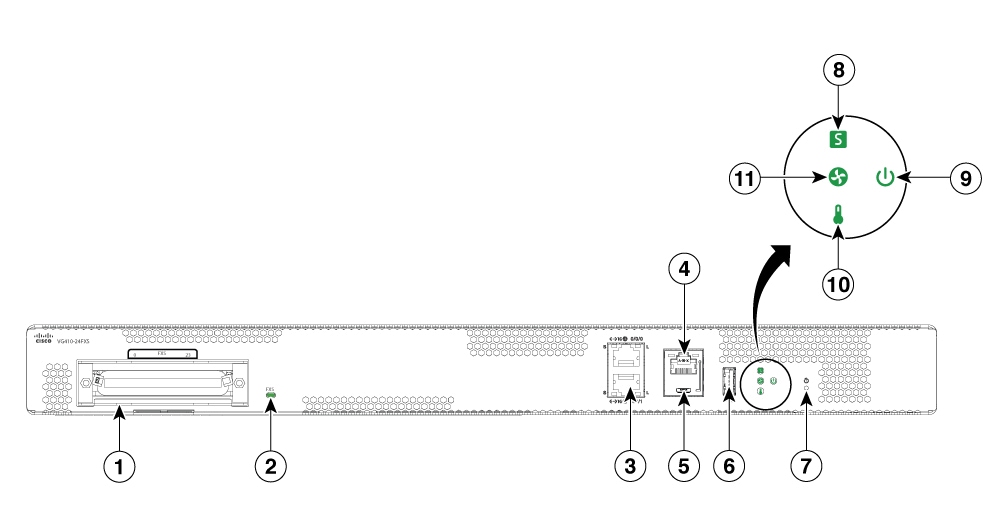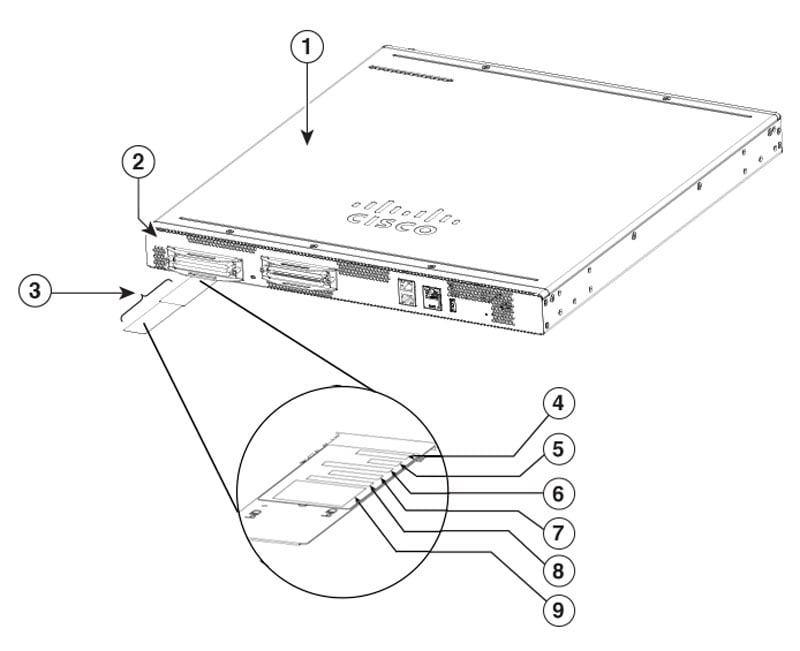Features and Benefits
Cisco VG410 Voice Gateway provides VoIP connectivity to analog devices such as analog desk phones, analog conference room phones, fax machines, and modems. This voice gateway provides several improvements from the previous high-density analog and digital extension modules (EVMs) in the following ways:
-
Software Digital Signal Processor (DSP): The Cisco VG410 Voice Gateway chassis utilizes its built-in CPU cores to handle the digital signal processing (DSP) tasks required for software implementation. This means that the functionality typically provided by a separate DSP component is now distributed among the CPU cores within the device. Further, the CPU cores effectively handle the necessary DSP operations. The software DSP comes pre-installed as part of the manufacturing process.
-
FXS-E (extended loops or long loops) support: The first 24 ports of all the SKUs on the new modules support FXS-E with:
-
Higher loop current (35 mA) to accommodate specialty phones
-
Longer loop length for loops with 26 AWG wire, up to 11,000 feet (3400 meters)
-
Higher ringing voltage (65 Vrms, no load)
-
In addition to these features, Cisco VG410 Voice Gateway supports the following features:
-
Webex calling
-
Caller line ID
-
G.711, G.729a, G.729ab, and G.726
-
G722, iLBC
-
Fax pass-through and relay (T.38)
-
Modem pass-through, Modem relay, and V.150.1 MER modem relay support
-
DTMF detection
-
Echo cancellation
-
Voice activity detection
-
Comfort noise generation
-
Real-Time Control Protocol (RTCP)
-
Acoustic shock protection
-
Real-Time Transport Protocol (RTP)
-
RFC 4733 Digit Relay
-
Noise reduction
-
Call Details Records (CDR)
-
Support for Loop-start and Ground start signaling
-
Support for interworking with Cisco Unified Communications Manager (CUCM): Skinny Client Control Protocol (SCCP), Session Initiation Protocol (SIP), and Media Gateway Control Protocol (MGCP) 0.1
-
Cable detection: GR909 line test
FXS Features
The FXS features include:
-
Support for either FXS or DID functionality
-
Message-Waiting Indicator (MWI)
FXO Features
The FXO features include:
-
Overload protection
For more information on features, benefits, and other specifications, refer to the Cisco VG410 Voice Gateway Data Sheet.





 Feedback
Feedback